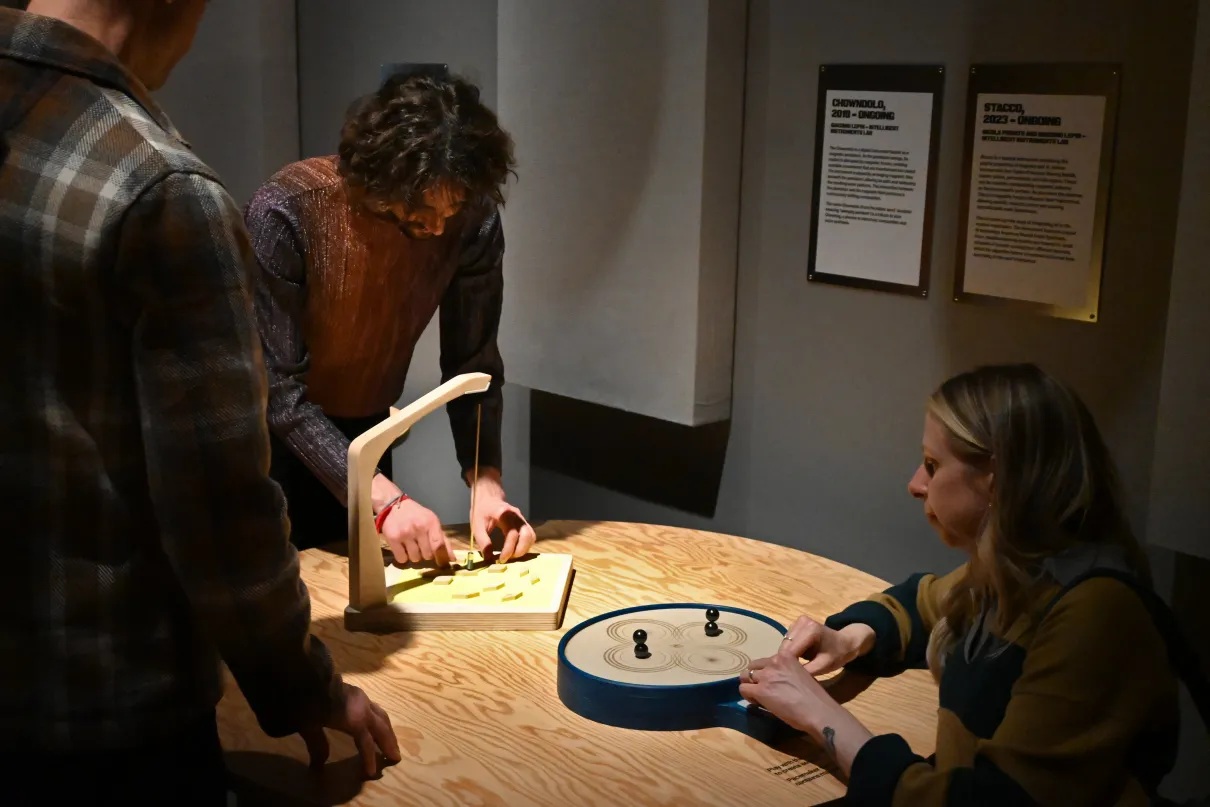Chowndolo and Stacco at the Barbican
Mon May 26 2025
We’re thrilled to be part of Feel the Sound, the Barbican’s new exhibition exploring how we experience sound—not just with our ears, but with our entire bodies and across space. Running through August 31, the show brings together a diverse collection of sound-based installations that are immersive and playful. Giacomo and Nicola were at the opening and found a fantastic crowd engaging enthusiastically with the artworks— jamming, experimenting, laughing, and lingering. It was a joy to see the public approach the artworks with such openness and curiosity.

Audience at the opening exhibition playing with Stacco and Chowndolo
We’re proud to be exhibiting two of our own instruments: Chowndolo and Stacco, both redesigned specifically for long-term public interaction. Over the past months, we’ve worked intensely to transform them into durable, intuitive, and engaging pieces that can meet the demands of a busy exhibition space. This process pushed us to reflect critically on the shift from research prototype to research product [1]: What happens when an instrument leaves the lab? How do you maintain nuance and openness while ensuring robustness, accessibility, and safety for hundreds of daily users? Both instruments have been extensively used in performance and research contexts, but adapting them for public exhibition required rethinking several aspects—materials, interface layout, and sonic feedback. It was a chance to reimagine our work not only as tools for inquiry but as artworks capable of withstanding and thriving in the wild.

Chowndolo is a digital instrument based on a swinging magnetic pendulum. Users place magnetic tiles beneath it, subtly altering its path and generating sound through FM synthesis. The result is a constantly evolving sonic experience shaped by invisible forces and physical play.

Stacco blends magnetic interaction with AI-driven neural audio synthesis. Users explore rich sound textures—ranging from voices to flowing liquids, percussions, and old organs—by moving magnetic spheres and adjusting sliders across a tactile surface. Its design supports both precise control and spontaneous discovery.
These new iterations reflect a broader aim of our work at the Intelligent Instruments Lab: to create sustainable, shareable systems that can live outside the lab—still inviting exploration, provoking thought, and supporting meaningful interaction.
If you’re in London this summer, we’d love for you to stop by, have a play, and let us know what you think! More info about the exhibition:
[1] William Odom, Ron Wakkary, Youn-kyung Lim, Audrey Desjardins, Bart Hengeveld, and Richard Banks. 2016. From Research Prototype to Research Product. In Proceedings of the 2016 CHI Conference on Human Factors in Computing Systems (CHI ‘16).